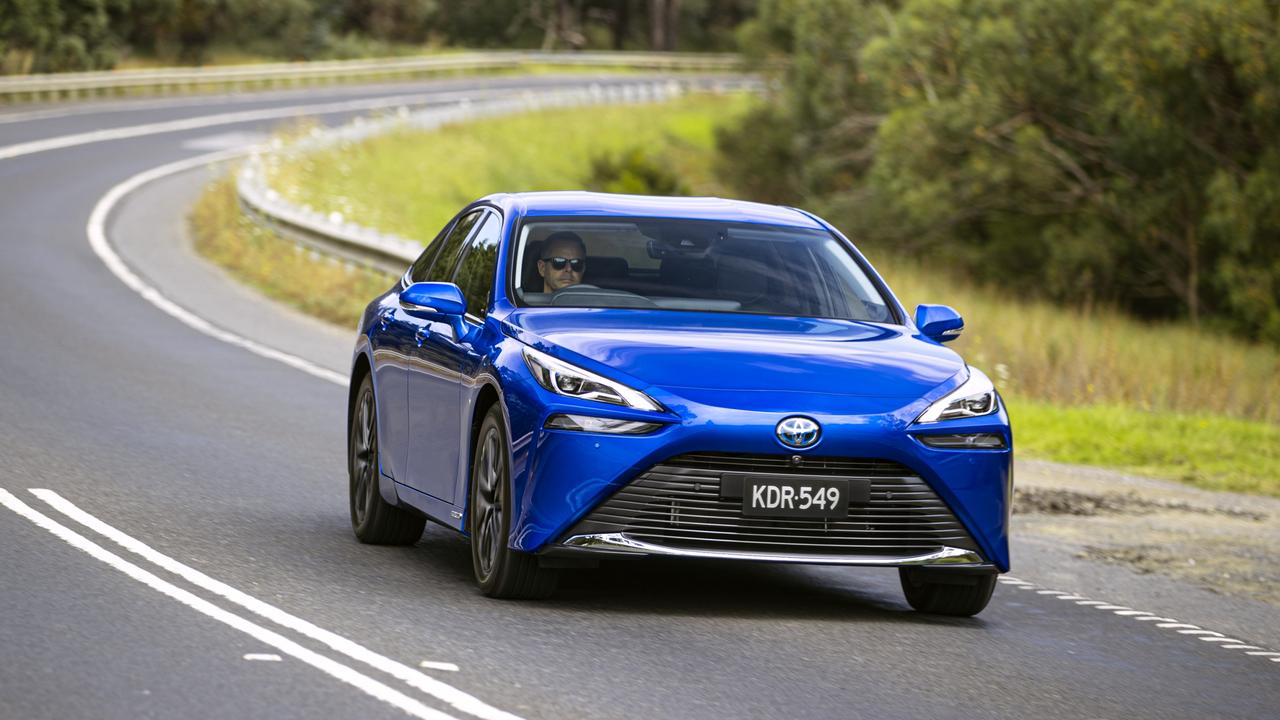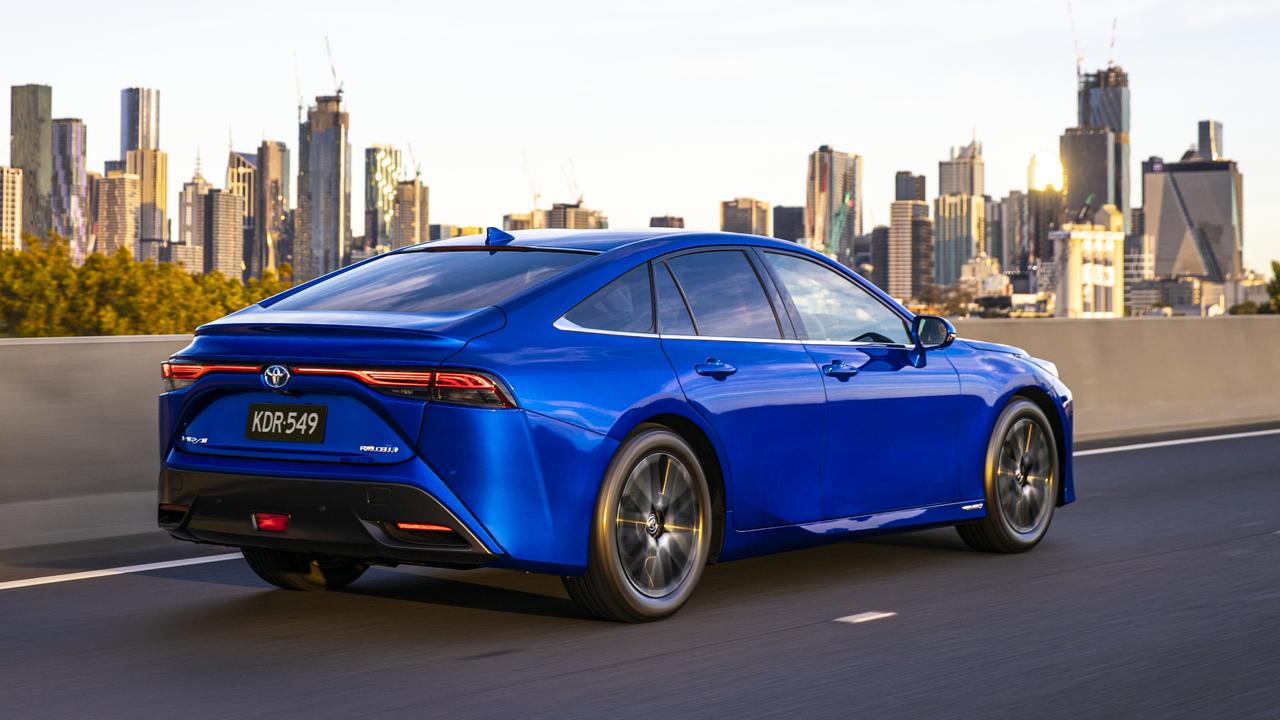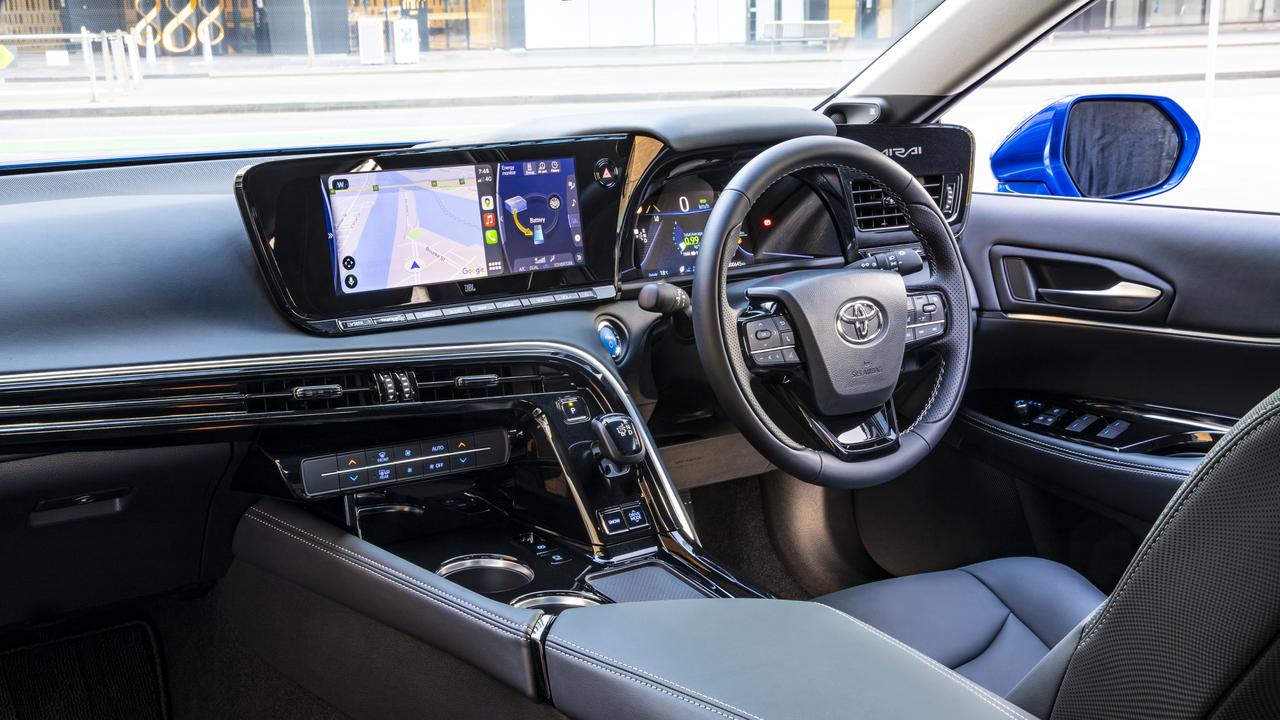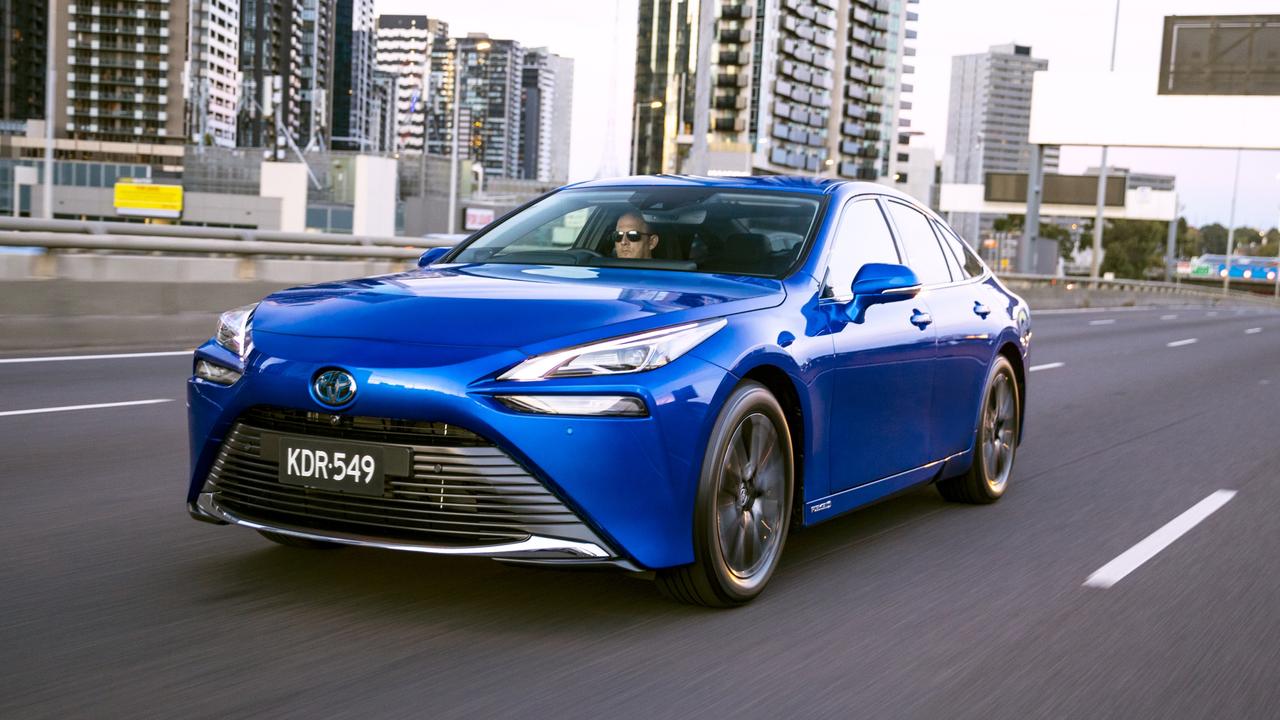Any techos out there have any thoughts on this?
2021 Toyota Mirai review: New car shows potential of hydrogen powerThe Japanese giant is bringing a small number of its new type of car to Australia that could be the answer to one of the biggest electric car questions.
The cost of going green with Toyota is a bit over $1 per kilometre.
That’s what “buyers” will pay as part of a lease deal for the Mirai, the brand’s new hydrogen fuel-cell electric vehicle.
Just 20 have arrived and Toyota is chatting to fleets about leasing them for $1750 per month for three years, plus $2693 for servicing to cover the 60,000km limit that also incorporates fuel.
Toyota’s Mirai is powered by hydrogen.As with the Hyundai Nexo, the Mirai runs purely on hydrogen and emits only water from its exhaust.
The technology is not cheap, though, and currently there are only two public refuelling stations — one in Melbourne and one in Canberra — significantly limiting usefulness.
Mirai buyers return the cars after three years, allowing Toyota to monitor the tech and ensure cars are being driven vaguely closely to where they can be refuelled.
As with the Prius hybrid that arrived in 2001, the Mirai is expensive and a long way from mainstream.
The hi-tech machine converts hydrogen to electricity, which powers the car.Toyota believes hydrogen could be big business by 2030, though, especially in large four-wheel drives such as the LandCruiser and HiLux. At 4975mm long and 1885mm wide the Mirai is longer and wider than a Camry with more space between the front and rear wheels.
The proportions and coupe-inspired silhouette have hints of Lexus and inside the attention to detail is more akin to a premium brand.
The Mirai is also the first rear-wheel drive Toyota sedan in Australia since the Cressida bowed out to the Camry in the early 1990s.
That’s because the electric motor is in the back and the bonnet houses the fuel cell that performs the chemical reaction to create electricity. Three hydrogen tanks are hidden beneath the floor, carrying a combined 5.6kg of gas that is claimed to take the Mirai about 650km between top-ups.
The Mirai has a well equipped cabin.During our brief drive the car used about 1.1kg of hydrogen per 100km, suggesting a realistic range of closer to 500km.
That’s good going for an electric car that takes about five minutes to refuel using a purpose-built nozzle similar to a petrol pump.
Performance is respectable without rewriting any benchmarks, a low-speed whoosh or wheeze accompanying hard takeoffs as hydrogen pulses through the system. The 134kW/300Nm e-motor shifts things with little fuss.
What it lacks in outright oomph it compensates for with near-instant responses and a usable surge.
From the outside the Mirai occasionally purges water from its exhaust between the rear wheels. There’s also an “H20” button if you want to wet the ground manually.
Sending the drive to the rear reduces the chance of tyre squeal when punching out of a side street or tight corner. Comfort is the order of the day elsewhere, nicely supportive seats complementing the plush ride.
The only tail pipe emission is water.Yet despite its cushiness, it displays ability and poise through corners.
There’s also a generous spread of kit, including 19-inch alloys, a 14-speaker JBL sound system, digital instrument cluster and 12.3-inch central infotainment screen.
A sunroof, head-up display and wireless phone charging are missing, though, and the seat trim is imitation leather.
There are other compromises, too. The back seats don’t fold and the boot is a modest 272 litres, plus there’s no spare wheel.
Those in the rear will have to contend with an enormous tunnel in the middle of the floor, meaning minimal space for legs.
The swoopy roofline also calls for a crane of the neck on the way in.
And what looks like a deep centre console is shallow (again, blame a hydrogen tank) although there’s a teenager-friendly smattering of USB plugs front and rear.
Whether the Mirai has the long- term impact of the Prius remains to be seen, but Toyota appears heavily committed to a technology it believes could shape Australian roads in future. The Mirai is proof fuel-cell vehicles can work well — provided you can find somewhere to refuel.
VERDICT 3/5
Expensive but impressive showcase of fuel-cell tech that’s arguably better suited to LandCruisers and HiLuxes.
TOYOTA MIRAI VITALS
Price: Lease from $1750 per month
Warranty/servicing 5 yrs/unlimited km, $2693 for 3 yrs/60,000km
Safety: Not rated, 7 airbags, autonomous emergency braking with pedestrian/cyclist detection, blind-spot warning, lane-keep assist, 360-degree camera, rear cross-traffic alert
Motor: Single electric motor driving the rear wheels, 134kW/300Nm
Thirst: 0.9kg/100km (hydrogen)
Spare: Repair kit
Boot: 272L
- Forums
- ASX - By Stock
- TLG - Media
Any techos out there have any thoughts on this?2021 Toyota Mirai...
-
- There are more pages in this discussion • 13,073 more messages in this thread...
You’re viewing a single post only. To view the entire thread just sign in or Join Now (FREE)
Featured News
Add TLG (ASX) to my watchlist
 (20min delay) (20min delay)
|
|||||
|
Last
57.5¢ |
Change
0.000(0.00%) |
Mkt cap ! $218.3M | |||
| Open | High | Low | Value | Volume |
| 60.0¢ | 60.0¢ | 57.5¢ | $76.50K | 130.5K |
Buyers (Bids)
| No. | Vol. | Price($) |
|---|---|---|
| 3 | 7990 | 57.5¢ |
Sellers (Offers)
| Price($) | Vol. | No. |
|---|---|---|
| 58.0¢ | 11620 | 9 |
View Market Depth
| No. | Vol. | Price($) |
|---|---|---|
| 4 | 11297 | 0.575 |
| 9 | 30516 | 0.570 |
| 10 | 79335 | 0.565 |
| 13 | 171667 | 0.560 |
| 6 | 102869 | 0.555 |
| Price($) | Vol. | No. |
|---|---|---|
| 0.580 | 11620 | 9 |
| 0.585 | 31973 | 13 |
| 0.590 | 2377 | 3 |
| 0.595 | 26522 | 6 |
| 0.600 | 37823 | 4 |
| Last trade - 10.52am 04/07/2024 (20 minute delay) ? |
Featured News
| TLG (ASX) Chart |
The Watchlist
CCO
THE CALMER CO INTERNATIONAL LIMITED
Anthony Noble, CEO & MD
Anthony Noble
CEO & MD
Previous Video
Next Video
SPONSORED BY The Market Online








